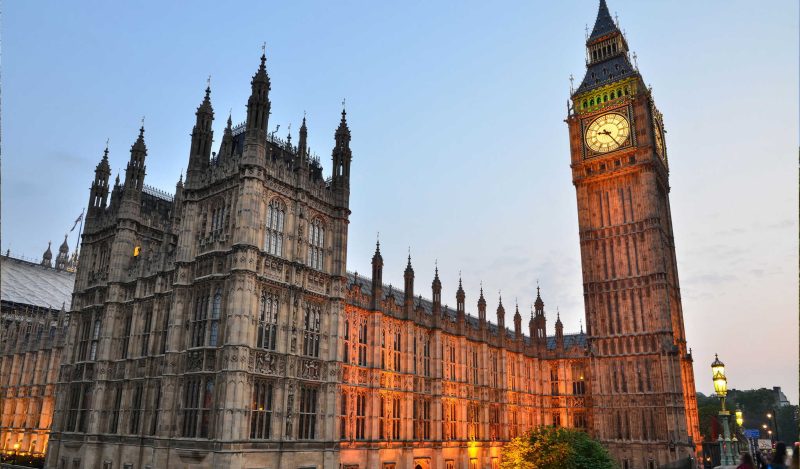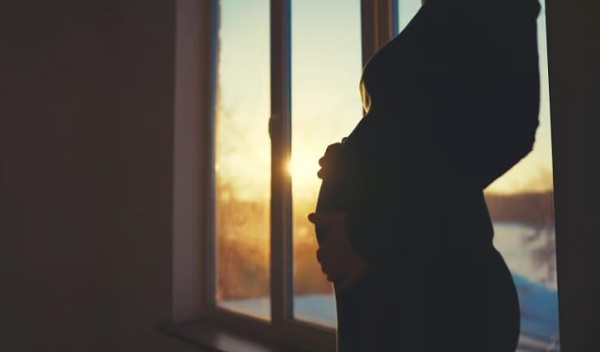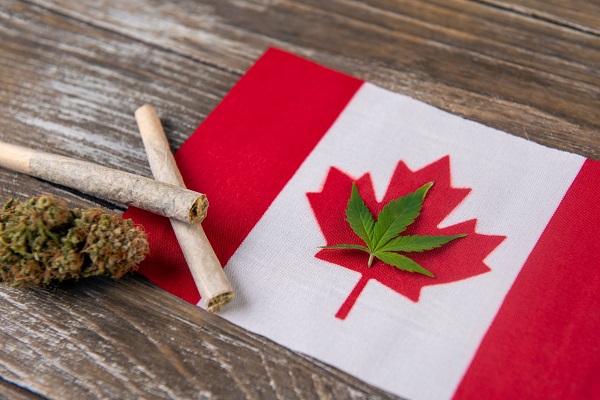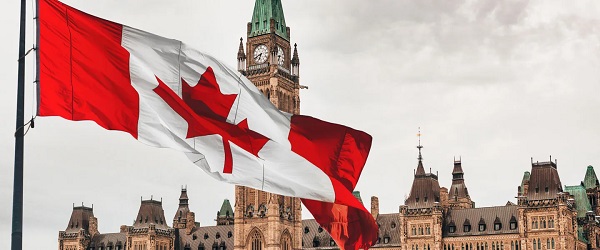Brownstone Institute
The Media Ignored the Parliamentary Debate on Vaccine Safety

From the Brownstone Institute
BY
On Monday, there was a debate in the UK Parliament on Covid vaccine safety. Cast into shadow by a storm of reporting on the appointment of the UK’s latest Prime Minister, it received virtually no mainstream press attention. This is unfortunate, as the issues it raises – about the scale of adverse vaccine reactions, excess death trends, potential breaches of medical ethics, and regulatory capture – are deserving of both airtime and urgent investigation.
In the UK as elsewhere the scale of adverse reactions from the Covid-19 vaccine is bitterly contested. The Parliamentary debate was no different – on the one hand Elliot Colburn (MP) repeated the orthodoxy that serious adverse events were “incredibly rare” and that such events as are reported are “typically mild, with individuals usually recovering within a short time;” whilst others cited evidence which casts doubt on that official narrative.
Sir Christopher Chope (MP) pointed out that other data sets have put risks much higher than the “12 reports per 1 million doses” pinpointed by Colburn as the Pfizer-suspected myocarditis reporting rate – “The Paul Ehrlich Institute is the German regulator responsible for vaccine safety,” he explained, before noting that on 20 July 2022, “…the institute confirmed that one in 5,000 people was seriously affected after a vaccination.”
These concerns were echoed by Andrew Bridgen (MP) noting that “…[a] study published in The Journal of the American Medical Association, included 7,806 children aged five or younger who were followed for an average of 91.4 days after their first Pfizer vaccination. The study showed that one in 500 children under five years of age who received a Pfizer mRNA…covid vaccine were hospitalised with a vaccine injury, and one in 200 had symptoms ongoing for weeks or months afterwards.”
One does not have to subscribe to a particular view of which of these data sets are more accurate to recognise that there are now at the very least serious questions to be asked and answered about the scale of adverse reactions. As Chope noted in relation to the German data, it “is serious information coming from the regulator of a country that is highly respected for the quality of its healthcare.” The same could be said of the well-documented analysis carried out by the Floridian health department indicating an 84% increase in the relative incidence of cardiac-related death among males aged 18 to 39 within 28 days following mRNA vaccination. These are not baseless concerns from a radical fringe; they are significant issues raised by respectable scientific and health authorities.
The continued refusal of the UK Government and the arms of the State to countenance let alone embrace a transparent review of the Covid vaccine rollout feels increasingly illegitimate the longer it continues, as too does the failure to discuss let alone investigate the cause of the well-documented rise in excess deaths.
As Bridgen asked, “What is the Government’s analysis of the excess deaths that we are suffering in this country, across Europe and in the Americas? Even a casual glance at the data shows a strong correlation between vaccine uptake and the excess deaths in those regions. Surely we must have an investigation. Tens of thousands more people than expected are dying. This is really important, and if we do not get it right, no one will believe us, and trust in politicians, in medicine and in our medical system will be lost.”
The other key thread running through the debate was that, however many lives the vaccine rollout may have saved, unanswered questions remain from a medical ethics perspective. “Why was vaccination extended to the whole population? I do not think we have ever had a completely satisfactory answer to that question,” asked Danny Kruger (MP), before adding “I ask it again, because my concern is that extending the vaccination programme became an operation in public persuasion—an operation in which dissent was unhelpful or even immoral, and an operation that justified the suppression and even vilification of those who raised concerns.”
Likewise, said Kruger, “I worry about whether we can say that consent was fully informed in all cases,” before adding “Throughout, there has been misinformation in favour of the vaccine,” referencing the now highly discredited official line that the vaccine was 95% effective, and that it would stop transmission.
Nowhere are the ethics of the vaccine rollout murkier than in relation to children, where the perceived lack of benefit relative to risk is most pronounced. Again Kruger stuck his neck out in a valiant attempt to shine light: “…we had the notorious claim by Professor Chris Whitty that even though the vaccine brought no benefit to children, children should be vaccinated to protect wider society…again, [this] feels like a profound break with medical ethics.”
The significance of these comments cannot be overstated: Parliamentarians from the governing Conservative Party are now expressly acknowledging that the Government’s authoritarian policy on the Covid vaccine rollout, combatting of vaccine hesitancy, and suppression of legitimate dissenting voices may have breached key tenets of medical ethics.
One of the consistent features of the last two years has been the tendency of vaccine evangelicals to dismiss anyone questioning the rollout as fringe anti-vaxxers – a lazy, vicious slur, designed to delegitimise serious debate.
And yet during this week’s Parliamentary debate, elected representatives appeared guilty of the same ideological laziness, Elliot Colburn (MP) dismissing out of hand Sir Christopher Chope’s question as to whether he had seen Oracle Film’s “Safe and Effective: A Second Opinion.” Many would maintain that in the context of a debate specifically on vaccine safety, Chope’s was an eminently reasonable question, and yet Colburn’s answer –
“I have not seen that publication, although I have read a lot of the significant amounts of material that have been shoved through my constituency office door by a large number of anti-vax protesters, who have flyposted my office on no less than a dozen occasions, and intimidated my 18-year-old apprentice and the people who live above my constituency office. Given that the content of that literature includes climate change denial, moon landing denial and so on, I am inclined to ignore it completely.”
This is an astonishing dismissal coming from an elected Parliamentarian – disrespectful to those who have suffered serious adverse reactions as a result of the vaccine and outright dangerous in its presumed intent of stifling debate in, of all places, the debating chambers of the UK Parliament.
At many points during the debate the degree of Establishment disinterest, bordering on wilful blindness, underlined: “The Government seems to be in denial about the risks of these vaccines,” noted Chope, with Kruger adding, “I am a member of the all-party parliamentary group on covid-19 vaccine damage…The APPG looks at vaccine injuries, and we had what I think was our first meeting last week in a Committee room in Portcullis House. I am afraid there were only a tiny handful of colleagues there, but well over a hundred members of the public attended, which is not the usual story for an APPG.”
Both the lack of any mainstream reporting of this debate – arguably an abject failure to hold the Government to account as should be a core role of a free press – and the refusal to investigate the underlying concerns are deeply regrettable. The Covid Public Inquiry in the UK will consider the vaccine rollout process, but it is not apparent that it will question vaccine safety – this seems unlikely in the current climate of suppression – and in any case the timescales for that inquiry run into years. This is far too long in the context of a medical intervention which continues to be marketed and rolled out nationwide.
In all of this there are unanswered questions about the role and independence of key regulatory bodies in the UK. As Danny Kruger (MP) summed it up, “I mentioned that the MHRA is funded by the pharmaceutical companies that produce the drugs and vaccines that it regulates. There might be some universe in which that makes sense, but this is not it.” That sentiment will be shared by the many of us who have watched, aghast, as foundational rubicons of medical ethics have been crossed, seemingly in pursuit of nothing more noble than the Prime Minister’s vaccine rollout ‘success’ statistics and Pfizer’s bottom line.
One does not have to agree with all of the points made by the MPs, and one does not have to dispute the fact that the vaccine rollout saved lives, to understand that questions raised by elected politicians in this debate – around the scale of adverse events, potential breaches of medical ethics and regulatory capture – are serious. They are all the more so given the context: far from being solely a historical event, the booster programme and rollout continues, including to children whom parents, medical professionals, and indeed Government Ministers, owe a special duty of care.
In the UK Parliamentary system Select Committees of MPs play an important role in holding both the private and public sector accountable to Parliament and thus, in some small way, to the people of the UK. With powers to call witnesses to attend and to require difficult questions to be answered, and with legal protection from retaliatory actions and political pressures, a Select Committee hearing may be the forum of last resort for this controversial politically-charged issue to be probed.
The last Select Committee hearing for the pharmaceutical industry took place in 2005. It concluded that lax regulatory oversight had contributed to an industry whose influence was out of control and plagued by practices “which act against the public interest.” Another hearing is overdue.
Brownstone Institute
Net Zero: The Mystery of the Falling Fertility

From the Brownstone Institute
By
If you want to argue that a mysterious factor X is responsible for the drop in fertility, you will have to explain (1) why the factor affected only the vaccinated, and (2) why it started affecting them at about the time of vaccination.
In January 2022, the number of children born in the Czech Republic suddenly decreased by about 10%. By the end of 2022, it had become clear that this was a signal: All the monthly numbers of newborns were mysteriously low.
In April 2023, I wrote a piece for a Czech investigative platform InFakta and suggested that this unexpected phenomenon might be connected to the aggressive vaccination campaign that had started approximately 9 months before the drop in natality. Denik N – a Czech equivalent of the New York Times – immediately came forward with a “devastating takedown” of my article, labeled me a liar and claimed that the pattern can be explained by demographics: There were fewer women in the population and they were getting older.
To compare fertility across countries (and time), the so-called Total Fertility Rate (TFR) is used. Roughly speaking, it is the average number of children that are born to a woman over her lifetime. TFR is independent of the number of women and of their age structure. Figure 1 below shows the evolution of TFR in several European countries between 2001 and 2023. I selected countries that experienced a similar drop in TFR in 2022 as the Czech Republic.

So, by the end of 2023, the following two points were clear:
- The drop in natality in the Czech Republic in 2022 could not be explained by demographic factors. Total fertility rate – which is independent of the number of women and their age structure – dropped sharply in 2022 and has been decreasing ever since. The data for 2024 show that the Czech TFR has decreased further to 1.37.
- Many other European countries experienced the same dramatic and unexpected decrease in fertility that started at the beginning of 2022. I have selected some of them for Figure 1 but there are more: The Netherlands, Norway, Slovakia, Slovenia, and Sweden. On the other hand, there are some countries that do not show a sudden drop in TFR, but rather a steady decline over a longer period (e.g. Belgium, France, UK, Greece, or Italy). Notable exceptions are Bulgaria, Spain, and Portugal where fertility has increased (albeit from very low numbers). The Human Fertility Project database has all the numbers.
This data pattern is so amazing and unexpected that even the mainstream media in Europe cannot avoid the problem completely. From time to time, talking heads with many academic titles appear and push one of the politically correct narratives: It’s Putin! (Spoiler alert: The war started in February 2022; however, children not born in 2022 were not conceived in 2021). It’s the inflation caused by Putin! (Sorry, that was even later). It’s the demographics! (Nope, see above, TFR is independent of the demographics).
Thus, the “v” word keeps creeping back into people’s minds and the Web’s Wild West is ripe with speculation. We decided not to speculate but to wrestle some more data from the Czech government. For many months, we were trying to acquire the number of newborns in each month, broken down by age and vaccination status of the mother. The post-socialist health-care system of our country is a double-edged sword: On one hand, the state collects much more data about citizens than an American would believe. On the other hand, we have an equivalent of the FOIA, and we are not afraid to use it. After many months of fruitless correspondence with the authorities, we turned to Jitka Chalankova – a Czech Ron Johnson in skirts – who finally managed to obtain an invaluable data sheet.
To my knowledge, the datasheet (now publicly available with an English translation here) is the only officially released dataset containing a breakdown of newborns by the Covid-19 vaccination status of the mother. We requested much more detailed data, but this is all we got. The data contains the number of births per month between January 2021 and December 2023 given by women (aged 18-39) who were vaccinated, i.e., had received at least one Covid vaccine dose by the date of delivery, and by women who were unvaccinated, i.e., had not received any dose of any Covid vaccine by the date of delivery.
Furthermore, the numbers of births per month by women vaccinated by one or more doses during pregnancy were provided. This enabled us to estimate the number of women who were vaccinated before conception. Then, we used open data on the Czech population structure by age, and open data on Covid vaccination by day, sex, and age.
Combining these three datasets, we were able to estimate the rates of successful conceptions (i.e., conceptions that led to births nine months later) by preconception vaccination status of the mother. Those interested in the technical details of the procedure may read Methods in the newly released paper. It is worth mentioning that the paper had been rejected without review in six high-ranking scientific journals. In Figure 2, we reprint the main finding of our analysis.

Figure 2 reveals several interesting patterns that I list here in order of importance:
- Vaccinated women conceived about a third fewer children than would be expected from their share of the population. Unvaccinated women conceived at about the same rate as all women before the pandemic. Thus, a strong association between Covid vaccination status and successful conceptions has been established.
- In the second half of 2021, there was a peak in the rate of conceptions of the unvaccinated (and a corresponding trough in the vaccinated). This points to rather intelligent behavior of Czech women, who – contrary to the official advice – probably avoided vaccination if they wanted to get pregnant. This concentrated the pregnancies in the unvaccinated group and produced the peak.
- In the first half of 2021, there was significant uncertainty in the estimates of the conception rates. The lower estimate of the conception rate in the vaccinated was produced by assuming that all women vaccinated (by at least one dose) during pregnancy were unvaccinated before conception. This was almost certainly true in the first half of 2021 because the vaccines were not available prior to 2021. The upper estimate was produced by assuming that all women vaccinated (by at least one dose) during pregnancy also received at least one dose before conception. This was probably closer to the truth in the second part of 2021. Thus, we think that the true conception rates for the vaccinated start close to the lower bound in early 2021 and end close to the upper bound in early 2022. Once again, we would like to be much more precise, but we have to work with what we have got.
Now that the association between Covid-19 vaccination and lower rates of conception has been established, the one important question looms: Is this association causal? In other words, did the Covid-19 vaccines really prevent women from getting pregnant?
The guardians of the official narrative brush off our findings and say that the difference is easily explained by confounding: The vaccinated tend to be older, more educated, city-dwelling, more climate change aware…you name it. That all may well be true, but in early 2022, the TFR of the whole population dropped sharply and has been decreasing ever since.
So, something must have happened in the spring of 2021. Had the population of women just spontaneously separated into two groups – rednecks who wanted kids and didn’t want the jab, and city slickers who didn’t want kids and wanted the jab – the fertility rate of the unvaccinated would indeed be much higher than that of the vaccinated. In that respect, such a selection bias could explain the observed pattern. However, had this been true, the total TFR of the whole population would have remained constant.
But this is not what happened. For some reason, the TFR of the whole population jumped down in January 2022 and has been decreasing ever since. And we have just shown that, for some reason, this decrease in fertility affected only the vaccinated. So, if you want to argue that a mysterious factor X is responsible for the drop in fertility, you will have to explain (1) why the factor affected only the vaccinated, and (2) why it started affecting them at about the time of vaccination. That is a tall order. Mr. Occam and I both think that X = the vaccine is the simplest explanation.
What really puzzles me is the continuation of the trend. If the vaccines really prevented conception, shouldn’t the effect have been transient? It’s been more than three years since the mass vaccination event, but fertility rates still keep falling. If this trend continues for another five years, we may as well stop arguing about pensions, defense spending, healthcare reform, and education – because we are done.
We are in the middle of what may be the biggest fertility crisis in the history of mankind. The reason for the collapse in fertility is not known. The governments of many European countries have the data that would unlock the mystery. Yet, it seems that no one wants to know.
Author
Brownstone Institute
FDA Exposed: Hundreds of Drugs Approved without Proof They Work

From the Brownstone Institute
By
The US Food and Drug Administration (FDA) has approved hundreds of drugs without proof that they work—and in some cases, despite evidence that they cause harm.
That’s the finding of a blistering two-year investigation by medical journalists Jeanne Lenzer and Shannon Brownlee, published by The Lever.
Reviewing more than 400 drug approvals between 2013 and 2022, the authors found the agency repeatedly ignored its own scientific standards.
One expert put it bluntly—the FDA’s threshold for evidence “can’t go any lower because it’s already in the dirt.”
A System Built on Weak Evidence
The findings were damning—73% of drugs approved by the FDA during the study period failed to meet all four basic criteria for demonstrating “substantial evidence” of effectiveness.
Those four criteria—presence of a control group, replication in two well-conducted trials, blinding of participants and investigators, and the use of clinical endpoints like symptom relief or extended survival—are supposed to be the bedrock of drug evaluation.
Yet only 28% of drugs met all four criteria—40 drugs met none.
These aren’t obscure technicalities—they are the most basic safeguards to protect patients from ineffective or dangerous treatments.
But under political and industry pressure, the FDA has increasingly abandoned them in favour of speed and so-called “regulatory flexibility.”
Since the early 1990s, the agency has relied heavily on expedited pathways that fast-track drugs to market.
In theory, this balances urgency with scientific rigour. In practice, it has flipped the process. Companies can now get drugs approved before proving that they work, with the promise of follow-up trials later.
But, as Lenzer and Brownlee revealed, “Nearly half of the required follow-up studies are never completed—and those that are often fail to show the drugs work, even while they remain on the market.”
“This represents a seismic shift in FDA regulation that has been quietly accomplished with virtually no awareness by doctors or the public,” they added.
More than half the approvals examined relied on preliminary data—not solid evidence that patients lived longer, felt better, or functioned more effectively.
And even when follow-up studies are conducted, many rely on the same flawed surrogate measures rather than hard clinical outcomes.
The result: a regulatory system where the FDA no longer acts as a gatekeeper—but as a passive observer.
Cancer Drugs: High Stakes, Low Standards
Nowhere is this failure more visible than in oncology.
Only 3 out of 123 cancer drugs approved between 2013 and 2022 met all four of the FDA’s basic scientific standards.
Most—81%—were approved based on surrogate endpoints like tumour shrinkage, without any evidence that they improved survival or quality of life.
Take Copiktra, for example—a drug approved in 2018 for blood cancers. The FDA gave it the green light based on improved “progression-free survival,” a measure of how long a tumour stays stable.
But a review of post-marketing data showed that patients taking Copiktra died 11 months earlier than those on a comparator drug.
It took six years after those studies showed the drug reduced patients’ survival for the FDA to warn the public that Copiktra should not be used as a first- or second-line treatment for certain types of leukaemia and lymphoma, citing “an increased risk of treatment-related mortality.”
Elmiron: Ineffective, Dangerous—And Still on the Market
Another striking case is Elmiron, approved in 1996 for interstitial cystitis—a painful bladder condition.
The FDA authorized it based on “close to zero data,” on the condition that the company conduct a follow-up study to determine whether it actually worked.
That study wasn’t completed for 18 years—and when it was, it showed Elmiron was no better than placebo.
In the meantime, hundreds of patients suffered vision loss or blindness. Others were hospitalized with colitis. Some died.
Yet Elmiron is still on the market today. Doctors continue to prescribe it.
“Hundreds of thousands of patients have been exposed to the drug, and the American Urological Association lists it as the only FDA-approved medication for interstitial cystitis,” Lenzer and Brownlee reported.
“Dangling Approvals” and Regulatory Paralysis
The FDA even has a term—”dangling approvals”—for drugs that remain on the market despite failed or missing follow-up trials.
One notorious case is Avastin, approved in 2008 for metastatic breast cancer.
It was fast-tracked, again, based on ‘progression-free survival.’ But after five clinical trials showed no improvement in overall survival—and raised serious safety concerns—the FDA moved to revoke its approval for metastatic breast cancer.
The backlash was intense.
Drug companies and patient advocacy groups launched a campaign to keep Avastin on the market. FDA staff received violent threats. Police were posted outside the agency’s building.
The fallout was so severe that for more than two decades afterwards, the FDA did not initiate another involuntary drug withdrawal in the face of industry opposition.
Billions Wasted, Thousands Harmed
Between 2018 and 2021, US taxpayers—through Medicare and Medicaid—paid $18 billion for drugs approved under the condition that follow-up studies would be conducted. Many never were.
The cost in lives is even higher.
A 2015 study found that 86% of cancer drugs approved between 2008 and 2012 based on surrogate outcomes showed no evidence that they helped patients live longer.
An estimated 128,000 Americans die each year from the effects of properly prescribed medications—excluding opioid overdoses. That’s more than all deaths from illegal drugs combined.
A 2024 analysis by Danish physician Peter Gøtzsche found that adverse effects from prescription medicines now rank among the top three causes of death globally.
Doctors Misled by the Drug Labels
Despite the scale of the problem, most patients—and most doctors—have no idea.
A 2016 survey published in JAMA asked practising physicians a simple question—what does FDA approval actually mean?
Only 6% got it right.
The rest assumed that it meant the drug had shown clear, clinically meaningful benefits—such as helping patients live longer or feel better—and that the data was statistically sound.
But the FDA requires none of that.
Drugs can be approved based on a single small study, a surrogate endpoint, or marginal statistical findings. Labels are often based on limited data, yet many doctors take them at face value.
Harvard researcher Aaron Kesselheim, who led the survey, said the results were “disappointing, but not entirely surprising,” noting that few doctors are taught about how the FDA’s regulatory process actually works.
Instead, physicians often rely on labels, marketing, or assumptions—believing that if the FDA has authorized a drug, it must be both safe and effective.
But as The Lever investigation shows, that is not a safe assumption.
And without that knowledge, even well-meaning physicians may prescribe drugs that do little good—and cause real harm.
Who Is the FDA Working for?
In interviews with more than 100 experts, patients, and former regulators, Lenzer and Brownlee found widespread concern that the FDA has lost its way.
Many pointed to the agency’s dependence on industry money. A BMJ investigation in 2022 found that user fees now fund two-thirds of the FDA’s drug review budget—raising serious questions about independence.

Yale physician and regulatory expert Reshma Ramachandran said the system is in urgent need of reform.
“We need an agency that’s independent from the industry it regulates and that uses high-quality science to assess the safety and efficacy of new drugs,” she told The Lever. “Without that, we might as well go back to the days of snake oil and patent medicines.”
For now, patients remain unwitting participants in a vast, unspoken experiment—taking drugs that may never have been properly tested, trusting a regulator that too often fails to protect them.
And as Lenzer and Brownlee conclude, that trust is increasingly misplaced.
- Investigative report by Jeanne Lenzer and Shannon Brownlee at The Lever [link]
- Searchable public drug approval database [link]
- See my talk: Failure of Drug Regulation: Declining standards and institutional corruption
Republished from the author’s Substack
-

 Also Interesting2 days ago
Also Interesting2 days ago9 Things You Should Know About PK/PD in Drug Research
-

 Business2 days ago
Business2 days agoWEF-linked Linda Yaccarino to step down as CEO of X
-

 Business2 days ago
Business2 days ago‘Experts’ Warned Free Markets Would Ruin Argentina — Looks Like They Were Dead Wrong
-

 Business2 days ago
Business2 days agoCannabis Legalization Is Starting to Look Like a Really Dumb Idea
-

 Bruce Dowbiggin1 day ago
Bruce Dowbiggin1 day agoThe Covid 19 Disaster: When Do We Get The Apologies?
-

 Business1 day ago
Business1 day agoCarney government should recognize that private sector drives Canada’s economy
-

 Media2 days ago
Media2 days agoCBC journalist quits, accuses outlet of anti-Conservative bias and censorship
-

 Automotive2 days ago
Automotive2 days agoAmerica’s EV Industry Must Now Compete On A Level Playing Field








